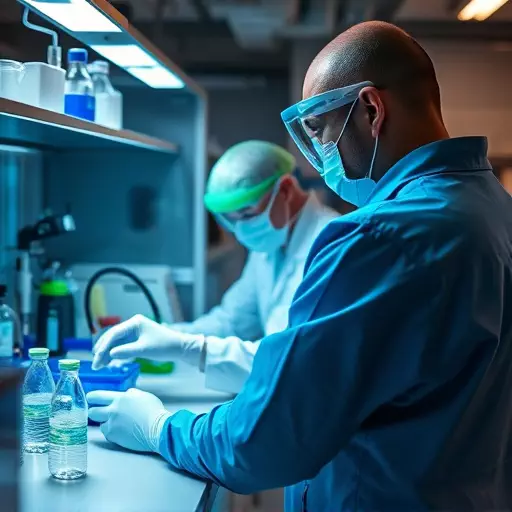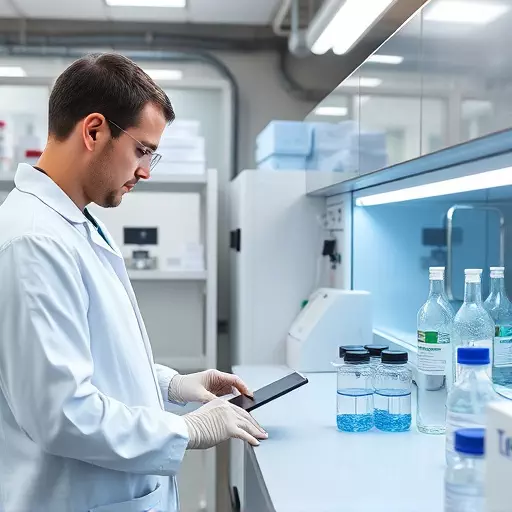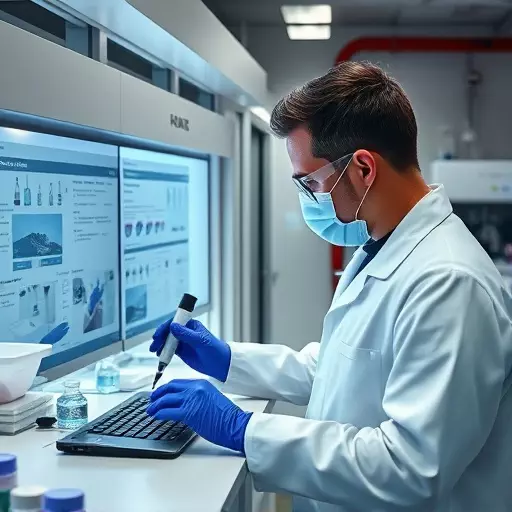In Gary-Lake Station's dynamic multidisciplinary labs, successful collaboration hinges on integrating diverse skill sets through strategic approaches. Designing intuitive user interfaces boosts technician efficiency, while implementing predictive maintenance technologies using IoT sensors and AI algorithms ensures lab equipment longevity. These strategies enhance productivity, foster teamwork, and optimize lab work processes in this fast-paced environment.
In modern research settings, particularly within multidisciplinary labs like Gary-Lake Station, managing diverse skill sets is key to optimal lab work. This article explores strategies to streamline operations and enhance productivity by addressing critical aspects: understanding unique skills, fostering inclusive environments, implementing efficient interfaces for technicians, adopting predictive maintenance plans, and promoting collaborative technology integration. These approaches aim to maximize the potential of diverse teams, ensuring both efficiency and longevity in lab equipment, ultimately advancing research outcomes.
- Understanding Diverse Skill Sets in Multidisciplinary Labs: A Gary-Lake Station Perspective
- Creating Inclusive Lab Environments: Designing User-Friendly Interfaces for Technicians
- Predictive Maintenance Strategies: Ensuring Longevity of Lab Equipment
- Collaborative Approach: Integrating Technologies for Seamless Lab Workflows
Understanding Diverse Skill Sets in Multidisciplinary Labs: A Gary-Lake Station Perspective

In the dynamic landscape of multidisciplinary labs, understanding and leveraging diverse skill sets are key to innovation and productivity. At Gary-Lake Station, lab work isn’t merely about scientific inquiry; it’s a complex dance involving various expertise, from technical proficiency in advanced machinery to user-friendly interface design and data analysis. The challenge lies in integrating these disparate skills seamlessly, ensuring that everyone contributes effectively.
One strategic approach adopted by Gary-Lake Station is implementing predictive maintenance for lab equipment. By utilizing sophisticated algorithms and sensors, the lab can anticipate equipment failures before they occur, minimizing downtime and maximizing longevity. Additionally, designing user-friendly interfaces plays a crucial role in boosting technician efficiency. Intuitive software that simplifies complex processes allows technicians to focus on critical tasks, fostering collaboration across different skill sets within the multidisciplinary environment.
Creating Inclusive Lab Environments: Designing User-Friendly Interfaces for Technicians

In a multidisciplinary lab setting at Gary-Lake Station, fostering an inclusive environment is key to harnessing diverse skill sets effectively. This begins with designing user-friendly interfaces for laboratory equipment and procedures. By simplifying complex processes and making critical information readily accessible, technicians from various backgrounds can work seamlessly. Implementing intuitive interface designs not only enhances productivity but also encourages collaboration among team members with different technical expertise.
Moreover, incorporating predictive maintenance technologies into the lab’s workflow is a strategic move to ensure the longevity of equipment. This involves leveraging data analytics and machine learning algorithms to anticipate potential failures before they occur. Such proactive measures not only minimize downtime but also empower technicians by providing real-time insights into equipment performance, further enhancing their efficiency in Gary-Lake Station’s dynamic lab environment.
Predictive Maintenance Strategies: Ensuring Longevity of Lab Equipment

In multidisciplinary labs, such as those in Gary-Lake Station, managing diverse skill sets requires strategic planning to ensure optimal efficiency and equipment longevity. One effective approach is implementing predictive maintenance strategies. This involves using advanced technologies like IoT sensors and AI algorithms to monitor lab equipment performance in real-time. By analyzing data from these systems, technicians can anticipate potential failures before they occur, minimizing downtime and reducing the risk of costly repairs or replacements.
Designing user-friendly lab interfaces plays a crucial role in this process. Intuitive software that allows technicians to easily access maintenance records, schedule preventive tasks, and receive alerts for upcoming service needs enhances overall efficiency. This streamlines the predictive maintenance workflow, enabling quick responses to equipment anomalies and promoting the long-term health of lab work systems in Gary-Lake Station.
Collaborative Approach: Integrating Technologies for Seamless Lab Workflows

In modern multidisciplinary labs, such as those in Gary-Lake Station, a collaborative approach is essential to managing diverse skill sets effectively. By integrating various technologies, lab teams can achieve seamless workflows that enhance productivity and efficiency. Designing user-friendly interfaces tailored for technicians streamlines complex processes, ensuring everyone, regardless of their expertise level, can contribute seamlessly. This includes implementing intuitive software solutions that simplify data management, analysis, and documentation.
Moreover, adopting predictive maintenance strategies for laboratory equipment is paramount. By leveraging IoT (Internet of Things) devices and machine learning algorithms, labs can monitor equipment performance in real-time, predict potential failures, and schedule maintenance proactively. This not only extends the lifespan of critical instruments but also minimizes downtime, ensuring consistent and reliable lab work. Such technological innovations foster a collaborative environment where skills complement each other, ultimately enhancing the overall efficiency and productivity of multi-disciplinary research.
